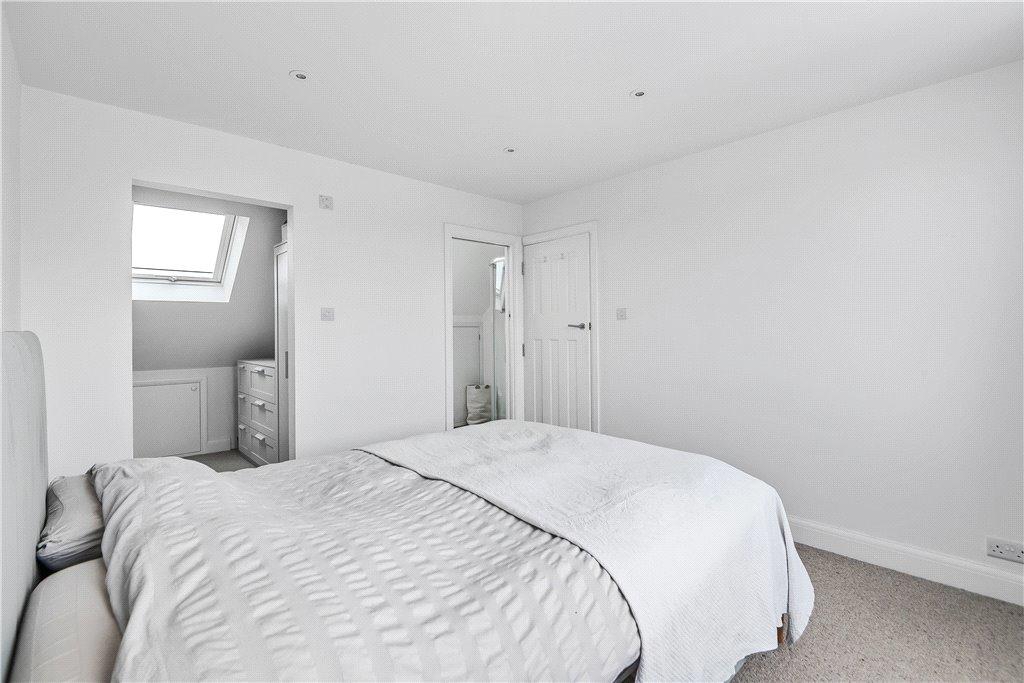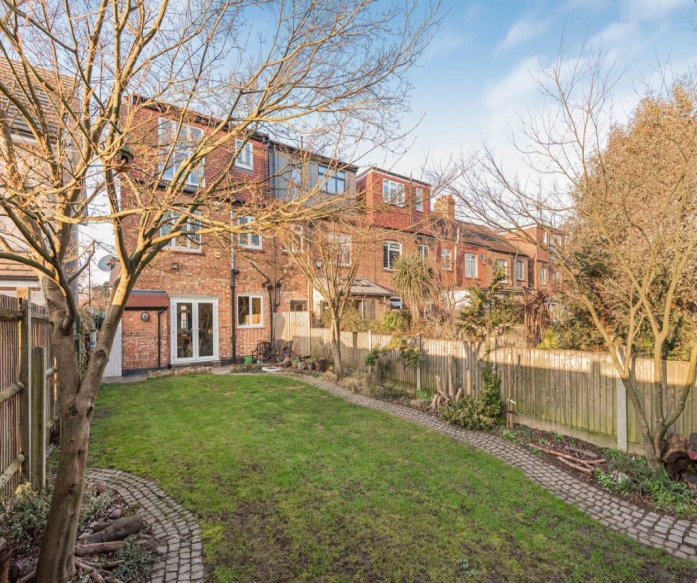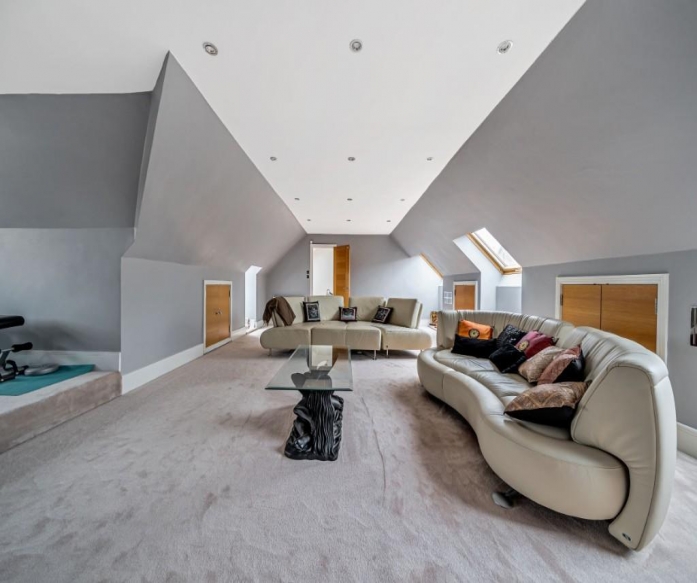Loft Conversion Barnet Blog
Design Tips for Loft Spaces in Your Barnet Property: Make the Most of Natural Light
July 2, 2025

Once you convert the loft space of your property, you can use it as a bedroom, library, office or studio. With an abundant flow of natural light inside, it might look more spacious. However, you need to know which type of loft conversion to choose to allow natural light to come in.
In the following blog, we will discuss some essential tips which will help you to make your lofts filled with natural light.
Choose the Right Type of Loft Conversion for Light Access
When you decide to go for a loft conversion in your property, you should decide on the correct type of loft conversion. If you're on a budget and want to make your attic usable, consider a Velux loft conversion. In this type of conversion, you don’t need to make structural changes to your roof; instead, you install roof windows to make way for natural light to come in.
Whereas a Dormer conversion adds a protruding box-like structure on the top of your roof. It features large windows, which is great for bringing in more natural light to the space. Besides natural light, it also offers more headspace.
On the other hand, if you prefer more natural light and headspace, consider a mansard loft conversion. It adds a vertical wall, which is approximately at a 72-degree angle, on one side of the edge. The roof over the slanted vertical wall is often flat. This type of loft typically features a balcony and large windows, allowing natural light to enter.
Strategic Placement of Skylights and Roof Windows
You might think that placing a large window is the right way to bring more natural light into the loft space. That might not always be the right choice. Instead, you can install multiple small roof windows for a better distribution of natural light.
However, if you plan to utilise the space as a bedroom, excessive natural light can be troublesome for sound sleep. In that case, you can use a manual or an electric blind to control the natural flow of light.
Use Glazing to Enhance Light Flow
Careful use of glazing can work excellently to allow natural light to travel freely in the loft space. If you plan to build a balcony attached to the loft space, consider using glass balustrades. It will not obstruct the natural flow of light into the loft.
Moreover, you can also use large glass window panels to allow natural light to come into the space. If you use glasses in the loft area, the space will seem more welcoming.
Light-Reflective Surfaces and Colour Schemes
The colour you plan to use inside the space determines how natural light will be reflected within the loft. It’s better to use bright colours like white, light grey and cream inside the walls of the loft. You can also paint the ceiling with light colours to keep the area shiny.
Moreover, glossy finishes on the furniture and floor will help to reflect more light inside the area. The glossy finish of the place can be enhanced by installing mirrors inside the loft. Natural light will bounce across the room, making it appear brighter.
Design Layout Around Natural Light Sources
When designing the layout of the loft space, remember to place reading nooks, desks, or dressing tables near the window. So, you would not need artificial light to read or get ready for the fancy party.
However, place bulky furniture away from the windows. This furniture will block the natural light from entering the loft space. Try to keep the space as uncluttered as possible to maintain its spaciousness. It will also allow natural light to reach each corner of the room without obstruction.
Consider Window Shape and Building Regulations
Remember that a mansard loft conversion may require an application for planning permission, as it involves several structural additions. However, consider placing roof windows in a shape that complements the look of your building.
Consult with experts at Loft Conversion Barnet and get suitable advice for your loft conversion options.
Conclusion
Design the loft space of your property in a way that allows maximum natural light to enter. It will help increase property value and make the space more functional for you. With the right choice of loft conversion design, you can retain the classic look of your building while increasing the usability of the loft space.
Do I Need Planning Permission for a Loft Conversion in Barnet?
June 23, 2025

Thinking about converting your loft? One of the first questions homeowners in Barnet ask is whether they need planning permission. The good news? Most loft conversions don’t require a complete application, but there are a few important rules to know before you start.
1. Permitted Development vs Planning Permission
In England, many loft conversions fall under “permitted development”. That means you can carry out certain changes without a full planning application, so long as your project follows specific guidelines laid out by the government.
Here’s the key information:
-
Volume limits: Terraced homes can add up to 40m³, while detached and semi-detached homes can add up to 50m³ of loft space
-
Roof height and materials: Any new roof area cannot sit higher than your existing ridge, and should match your current materials
-
Dormers and rooflights: Lifetime additions must stay 20cm back from eaves and not exceed the house’s original height
-
Side windows: Must be non-opening or glazed, and at least 1.7m above the floor to avoid overlooking neighbours
-
Conservation or designated areas: Planning permission is usually required for any dormer or roof extension in conservation areas, national parks, or listed properties
2. What Counts Toward Your Volume Allowance?
It’s worth remembering that permitted development rules include any previous loft work under the same roof. So, if there’s already an extension or dormer, its volume is counted toward your 40m³/50m³ limit.
That means anything beyond those limits — or retaining an existing dormer — will usually need full planning permission.
3. Conservation Areas & Article 4 Directions
Many parts of Barnet fall within conservation areas, which often come with extra restrictions. Local authorities can introduce Article 4 directions, meaning even permitted development may require approval.
In these cases, you should always check with Barnet Council before starting work — a straightforward call can save a lot of hassle later.
4. When Will You Need Planning Permission?
Planning permission is typically required if you are:
-
Building larger dormers that break the permitted development limits
-
Creating mansard roofs or reworking the roof structure significantly
-
Installing a balcony or veranda (not covered by permitted development)
-
Working on a conservation area or listed building
If any of these apply — or if your conversion crosses the volume threshold — you'll need to submit a full planning application.
5. Certificates of Lawful Development
If your project meets the permitted development requirements, another option is to apply for a Certificate of Lawful Development (CLD). It’s not a planning application, but a legal document confirming that your loft conversion complies with regulations. If your neighbour raises objections later, you’ll already have official proof that the work was lawful.
6. Building Regulations Still Apply
It’s important to remember that regulated building standards still apply, even if planning permission isn’t required. That means things like structural safety, insulation, fire safety, stairs, and ventilation must all meet building regulations and be approved by Building Control — whether via Barnet Council or an approved inspector.
7. How to Know What You Need
Here’s a simple step-by-step guide for Barnet residents:
|
Step |
What to Check |
|---|---|
|
1 |
Are you in a conservation area or is your property listed? (Barnet Council website) |
|
2 |
Will you exceed 40m³ (terraced) or 50m³ (semi/detached) roof space? |
|
3 |
Will you add dormers set back less than 20cm or higher than the ridge? |
|
4 |
Are side windows involved? Are they at least 1.7m high and obscured? |
|
5 |
Will you add a balcony, veranda, or work on a designated property? |
|
6 |
If any of the answers are Yes, you likely need full planning permission. |
8. How We Can Help
At Loft Conversion Barnet, we help you every step of the way — from design and permitted development checks to full planning applications and building regulations. Our in-house team and local architects are well-versed in Barnet's planning rules and can guide you through the process quickly and efficiently.
We’ll tell you straight away what kind of approval you need, saving time, money, and avoiding stress later on.
Summary
Most loft conversions in Barnet are doable under permitted development, as long as you stay within volume limits, roof height, and window placement rules — and aren’t in a protected area. But if your project goes beyond those boundaries, or you're in a conservation zone, you'll likely need full planning permission — or even a Certificate of Lawful Development.
Want to know exactly where your project stands? Get in touch with Loft Conversion Barnet, and we’ll walk you through your options on a no-obligation basis.
Will a Loft Conversion add Value to my Barnet House
June 23, 2025

When you hear talk about loft conversions, one of the biggest questions homeowners ask is: Will it add value to my property? In Barnet — where space is at a premium — the answer is a resounding “yes,” as long as the conversion is done well.
What the Numbers Say
A loft conversion can boost your home’s value by around 20–25%, according to property market studies. In London—Barnet included—that jump can be even more dramatic. Converting your loft into a double bedroom with an en‑suite could see you gain around 24–25% .
To put that in real terms, imagine your current four-bedroom house is worth £600,000. A loft conversion could add roughly £120,000—that’s a significant return on your investment.
Why Buyers Love Loft Conversions
Buyers today aren’t just looking for square footage; they want flexibility and extra rooms. Loft conversions tick both boxes—offering a desirable bedroom, potential en‑suite, or multipurpose space. Nationwide data shows that adding a loft bedroom can push values up by around 20–21% .
In Barnet’s market, where three-bed homes often compete in the £600,000–£800,000 range, a fourth bedroom can bump you up into a new sales bracket and unlock better offers.
Balancing Costs and Returns
Of course, loft conversions aren’t cheap. Price estimates in the area typically range as follows:
-
Simple dormer with bedroom + en‑suite: £35,000–£45,000
-
High-end mansard or hip-to-gable conversion: £60,000–£130,000
Even if your build costs £50,000 but adds £120,000 to your home’s value, that leaves you with a profit of approximately £70,000 — assuming long-term market stability.
What to Watch Out For
While the uplift figures are encouraging, there are a couple of warning signs to be aware of:
-
Over‑improving: If local homes don’t support higher price points, a loft conversion might not yield full value. Homes with lofts tend to top out around certain price levels — understand where your property fits .
-
Quality matters: A poorly done conversion can actually deter buyers. Finishes, layout, and build quality must be high. In Barnet, a well-executed conversion outperforms DIY-level jobs every time.
So, Is a Loft Conversion Right for You?
Here’s a quick comparison:
✅ Benefits
– Adds approx. 20–25% to your home’s value
– Allows you to stay put and avoid moving costs
– Delivers flexible living space for growing families
⚠️ Considerations
– Costs range from £35k to £130k
– Must match local market values
– Quality execution is essential for attracting buyers
What You Should Do Next
-
Check local comparables: Look at nearby homes being sold with loft conversions.
-
Get proper quotes: Ask builders for estimates that include finishes and compliance work.
-
Plan layout with purpose: Is it a bedroom? A home office? Think long-term.
-
Hire trusted professionals: Great design and construction matter — badly done jobs don’t add value.
Final Take
A well-planned loft conversion in Barnet can be a great investment—adding significant value to your home and saving you from the disruption and cost of moving. Just make sure your conversion fits your needs and the local market. Done right, it’s a win-win.